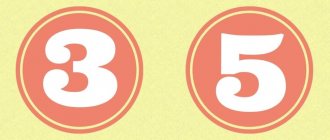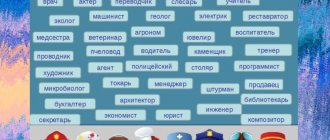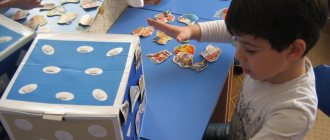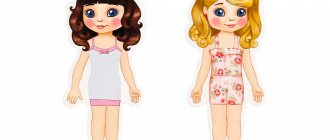Progress of the game: children are guided by the plan and layout.
"Continue the proverb"
Goal: to introduce oral folk word-making, to develop speech, memory, and logical thinking.
Progress of the game: The teacher begins the proverb , the children continue it.
“Birds of our city (region)
»
Goal: to introduce children to the birds of their hometown (region)
.Instill love for
the homeland , native land, the animal world, the desire to help and care. Material: cards with images of birds, album “Birds of our city, region”
, compiled together with
parents .
Progress of the game: The teacher shows the children cards with images of birds, asks them to name and determine whether the bird lives in our city or not.
"Riches of the bowels of the earth"
.
Goal: to expand children’s understanding of the richness of the earth’s interior in minerals (coal, minerals, iron ore, precious stones)
. Expand children's understanding of the internal structure of the earth.
Material: collection of earth's fossils, pictures and illustrations of the earth's natural resources.
Progress of the game - The teacher shows the children a picture (natural fossil)
offers to name it.
"The World of Objects"
Goal: to generalize children’s understanding that in the world around us many objects are made by man from materials of natural or artificial origin (using various materials, a person studies and uses their properties)
.
Foster cognitive activity.
Strengthen the ability to form adjectives. Material: Pictures and images of household items.
Progress of the game: Cook - cooks, fries, etc.
"Who are we? What are we like?
Goal: To consolidate children’s knowledge about man, to familiarize them with the external structure of the body and its capabilities, to develop the ability to compare and establish simple cause-and-effect relationships, to arouse interest in self-knowledge, to cultivate a caring attitude towards themselves and the world around them. Material: paintings and images of people (men and women.
Progress of the game: the teacher shows pictures with images and invites the children to find similarities and differences.
"Magic Words"
Goal: to evoke a desire to follow what is worthy of imitation, to objectively evaluate behavior, to cultivate a friendly and tolerant attitude towards people, the ability to compare and establish simple cause-and-effect relationships.
Material: paintings and images of people .
MAGAZINE Preschooler.RF
Didactic game “Travelling around the city of Syzran”RELEVANCE:
Play is one of the means of raising and teaching children. How to make the game more effective for developing cognitive interest?
We created a floor game and cubes “Collect the sights of the city” based on local history.
It turned out that the local history and game methods perfectly complement each other, bring variety, promote the creative development of children, increase interest in the history of their hometown, develop imagination, intelligence, and observation. There is an element of competition in them (who is faster, who answers more correctly, who knows more). During the game, preschoolers consolidate their acquired knowledge while enjoying the game.
GAME DESCRIPTION:
The didactic game “Travel around the city of Syzran” is intended for children of senior preschool age and is a fragment of a map measuring 2.5 m by 3 m, which indicates the route of travel around the city of Syzran and a cube measuring 50 cm by 50 cm. The journey starts from the Railway Station and ends with our Kindergarten No. 69 . The route passes through the sights of the city of Syzran.
Goal: consolidate knowledge about your hometown.
Tasks:
Cognitive development:
- Expand children's knowledge about the sights of the city of Syzran, know their names and locations.
- To foster patriotic feelings and love for the small Motherland.
- Continue to introduce the concept of quantity, master the skills of ordinal and quantitative counting, learn to correlate the number (in this case, dots on a cube) with the sign (numbers).
- Teach children to navigate in space
Speech development:
- Improve children's speech as a means of communication, continue to develop the dialogical form of speech.
- Continue teaching children to solve riddles.
- Activate children's vocabulary.
"Social and communicative development"
To develop in children the ability to conduct dialogue with adults and peers; bring up
culture of speech communication. Continue to cultivate friendly relationships between children.
Rules of the game:
The number of participants in this game can be two or more children.
Participants in the game stand at the start and use a dice to play out the order of moves. Then the players take turns.
Each turn, the player rolls the dice and moves forward exactly as many steps as there are dots on the dice.
Designations:
- Red circle “Stop or complete the task!” — to advance further, you must complete the task; if the task is not completed, you skip one move.
- Green circle “Extra turn” - the player rolls the dice again.
- Purple circle “Educational” - the players imagine themselves as tour guides in their hometown, introduce city guests to its sights and memorable places (depending on the task set by the teacher); if the child finds it difficult to answer, then the teacher takes on the role of guide.
The participant who reaches the finish line first will win.
Sample tasks to complete:
Task: the player needs to assemble from puzzles the coat of arms of Syzran, while eliminating the unnecessary ones - elements of other coats of arms (Samara region and Samara).
Task: in front of the player is an album and outline images of the city’s attractions. Task: you need to find a pair, that is, match the contour with the image.
Assignment: You need to look at pictures of animals and birds and determine what is superfluous. At the same time explaining your choice.
Assignment: Cut-out pictures depicting city attractions. It is necessary to put together a picture from memory depicting the sights of your hometown.
Cubes “Collect the sights of the city” .
Goal: To consolidate children's knowledge about the sights of the city.
Game task:
- make a picture from the cubes according to the model.
Didactic task:
- develop attention, memory, thinking, perseverance
- exercise children in making a whole picture from individual parts
- through the content of pictures, consolidate children's knowledge about their hometown
- cultivate love and respect for your hometown.
GAME DESCRIPTION:
The game consists of six dice and pictures of the city's attractions. The teacher and the children look at the pictures. The preschooler names what interesting buildings are depicted on them, and if there is difficulty, the teacher helps. The preschooler chooses a picture to use to assemble the cubes. If a child tries to assemble a picture on his own, this is encouraged with praise. After the picture is collected, the teacher clarifies what the child collected. One child can collect all 6 pictures or collect them one at a time.
| Next > |
Progress of the game: The bear has a den. The squirrel has a hollow.
“Which tree is the leaf from?”
Goal: to consolidate children’s knowledge about the nature of their native land, to consolidate the ability to form relative adjectives (birch - birch, oak - oak, etc.)
Material: Pictures and illustrations of trees, bushes and leaves.
Progress of the game: The teacher shows pictures depicting a leaf, then a tree.
"Green Pharmacy"
Goal: to consolidate children’s knowledge about medicinal plants of their native land; about their correct use for medicinal purposes.
Material: herbarium, card index of medicinal herbs .
Progress of the game: The teacher shows a picture of a medicinal herb, the children guess. The teacher talks about its healing properties.
"Little Red Book"
Goal: to consolidate children’s knowledge about rare plants, animals, birds of our region listed in the “Red Book”
.
Instill love for the homeland , native land, and a sense of responsibility.
Material: “small red book”
, compiled together with
parents , pictures and illustrations depicting rare plants, animals, birds. Progress of the game: The teacher shows a picture depicting rare animals and plants, the children name. The teacher talks about them .
"Countries and Peoples"
Goal: Expand children's understanding of the countries of the Earth and their peoples. To instill an interest in the lives of people with different lifestyles, cultures and traditions. Instill respect for the culture and traditions of different peoples of the world.
Material: globe, map of the World , dolls in national costumes, recordings of melodies of songs of different peoples, pictures and illustrations depicting different countries and peoples of the world.
Progress of the game: The teacher shows a picture depicting different countries and peoples of the world. Talks about them.
“What is the house built from?”
Goal: to improve knowledge of building materials, what a person’s home is made of, the ability to think logically, to consolidate the ability to form an adjective.
Material: Image of different human dwellings.
Progress of the game: Children look at pictures of houses. Word formations: glass - glass, stone - stone.
"Residential - Non-Residential"
Goal: to consolidate children’s knowledge that buildings are residential and non-residential.
People live in residential buildings; in non-residential areas there are organizations, utility rooms, etc.
Material: pictures and illustrations depicting different buildings.
Progress of the game: The teacher suggests identifying residential or non-residential premises: House - residential, store - non-residential...
"Call me kindly"
Goal: to improve children’s speech as a means of communication, to cultivate friendly relationships. Strengthen the ability to form diminutive words, introduce different names. Material: Progress of the game: Misha - Mishenka, Dasha - Dasha, Dashulya.
"I love…"
Goal: to cultivate a respectful , caring attitude towards loved ones, towards each other, develops communication skills.
Progress of the game: The presenter tells the children: “Each of us loves something or someone, all people have this feeling. I love my family, my job, I love you. Tell us who or what you love.” Children talk about their feelings and affections.
“How to find a path to kindergarten?”
Goal: To strengthen children’s ability to navigate the terrain plan, to be able to explain the location of objects in relation to each other. Strengthen the ability to determine the direction of movement. Develop abstract thinking. Material: area plan (neighborhood)
layout of the microdistrict area.






